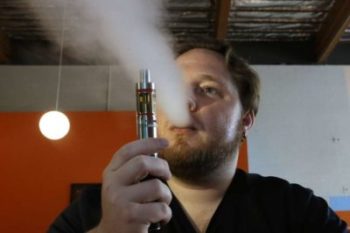
25 Oct Prop. 56 would tax it like tobacco – Vote No!
Prop 56 not only puts huge tax burden on the public, but also goes after vaping!
Vaping nicotine has grown in popularity in the past decade, especially among young adults like Freeman who are current or former cigarette smokers, according to the National Health Interview Survey. The liquid nicotine — or vape juice, e-juice and e-liquid — is touted as a safer alternative than cigarettes that contain harmful carcinogens and chemicals. But because e-cigarettes and vaping are relatively new to the market, they have been largely unregulated.
Until now. Increasingly, public health officials are targeting the industry, condemning the products as addictive, alluring to youth and a gateway to cigarettes. And one of the greatest threats facing the industry looms on the Nov. 8 ballot in California.
Proposition 56 is best known as the measure to dramatically boost the state’s cigarette tax. But it also would start to tax e-cigarettes and liquid nicotine like tobacco — which both sides say could trigger a similar push nationwide.
“Electronic cigarettes are extending and expanding the tobacco epidemic,” says Stanton Glantz, professor of medicine at UCSF and director of the Center for Tobacco Control Research and Education. “They are bringing a whole new group of kids into the tobacco market who would never start cigarettes.”
In June, the journal Pediatrics published a study that found adolescents who had smoked e-cigarettes were more than six times as likely to smoke cigarettes than their peers who had never used an e-cigarette.
In May, the U.S. Food and Drug Administration issued regulations classifying the products as tobacco, banning the sale to anyone under 18, after surveys showed e-cigarette use among high school students had skyrocketed from 1.5 percent to 16 percent in the past four years. Over the summer, Gov. Jerry Brown signed a law raising the legal smoking age in California to 21 — and applying it to vaping.
A growing number of cities have banned flavored nicotine, which comes in more than 1,000 combinations of concentrations and flavors: blackberry, watermelon and apple crisp, just to name a few. Five states have imposed additional taxes on e-cigarettes or vapor products.
“We have been under attack,” says Tony Doan, who owns two liquid nicotine manufacturing centers in the San Jose area. “They are making it impossible to stay in business and provide this alternative product. Passively, what they are doing is banning us.”
Prop. 56 would increase taxes on cigarettes by $2 a pack, moving it from one of the lowest tobacco taxes in the country to one of the highest, and impose new taxes on liquid nicotine products.
While the $2 tax increase would certainly hit smokers in the wallet, it would be even greater for vapers. That’s because the proposition would levy a 68 percent tax on liquid nicotine — turning a $15 to $20 bottle of juice into a $40 to $50 bottle.
“Everybody is going to go back to cigarettes,” Doan says. “A lot of people don’t realize that.”
Most experts agree vaping is less hazardous than smoking because the liquids don’t contain carcinogens. But recent studies have linked nicotine itself to adverse health conditions, including increased risk of heart attack and stroke. Most researchers agree little is known about the their long-term effects.
Read the rest of this story at SFChronicle.


No Comments